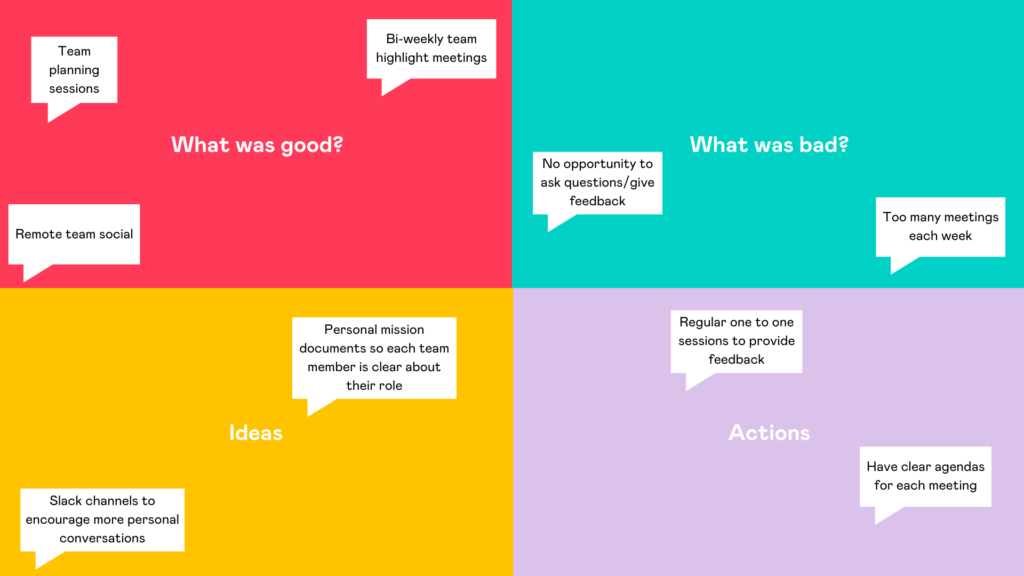Remote working is here to stay. While some people have been working from home for years, the coronavirus pandemic really opened employers’ eyes to the value of remote work.
The benefits are numerous: more flexible hours, better work-life balance, reduced overheads, happier workers, etc. You know the drill.
But remote working doesn’t come without its challenges for employees and organisations alike.
One of the main challenges in this hybrid world is building and maintaining a thriving culture when most employees work from home. Since the onset of the pandemic, 60% of surveyed workers reported that they feel less connected to colleagues.
Honestly, if you find it challenging to self-motivate and miss the accountability of working side-by-side, it can be pretty hard to stay productive. Whether hybrid or remote, many companies are not going back to pre-pandemic structures any time soon (or ever?).
So how can leaders get around the geographical distance and still cultivate a positive environment to keep employees happy and engaged?
Why is a strong team culture important?
Culture is more than office vibes, Spotify playlists or coffee trips. It takes more to help foster connections between the company and employees. Building a remote culture is a challenge, especially with the lack of in-person interactions to help it evolve organically.
However, that’s not to say building a remote culture can’t happen organically. All you need to do is put more deliberate thought and proactive effort in to help shape it! If you need more convincing, here are just a few of the benefits you can reap:
Higher employee retention
Culture is super important in avoiding high staff turnover. It’s pretty simple – if someone isn’t happy in a job, they’re going to start looking elsewhere.
The number one reason people leave their job is not feeling valued or like they belong. But when an employee feels like a valued member of a team and has positive relationships with coworkers, they’re more likely to stick around.
Improved teamwork
A team with good communication and a thriving culture will always succeed. Team members who have good relationships are more likely to help each other out and feel more comfortable collaborating on projects.
Even if colleagues have never met face to face, it’s easier to work together when there’s some sort of established relationship there.
Boosted innovation
Innovation is what moves a company forward. We’re not talking about ideas from the C-suite or head honchos. Innovation from the lower levels is often what makes all the difference.
When multiple people across teams and departments have an established connection – thanks to strong company culture – it’s so much easier to work together and bring ideas to fruition.
Being confident and comfortable enough to float ideas in front of coworkers without fear of being scoffed at is psychological safety. It’s a massive asset that comes from having a positive workplace culture.
Characteristics of a thriving team culture
What does a thriving team culture look like? Here’s what to aim for:
- Good collaboration within teams and across departments
- Employees being comfortable to reach out to colleagues on other teams, even if they’ve never met face to face
- Frequent and effective communication, no time-wasting Zoom meetings that could have been an email!
- A strong sense of purpose among employees
- Sharing the drive to succeed, both as individual teams and as a company on the whole
- Employees being bonded by shared values, priorities and goals
- A solid system for recognition and rewards.
How to build a thriving culture in your remote team
Now that we’ve painted the picture let’s jump right in with some actionable ideas.
Create opportunities for communication
You can’t have a team culture without communication. Set up calls amongst your team, perhaps a weekly check-in where everyone shares the best article, meme, or Tweet they’ve seen this week — or something they’ve learned about your business or industry that could help other people.
It’s important to encourage remote socials or activities that are non-work-related, too. Don’t go too hard though because no one wants to partake in a two-hour virtual Uno game. Short Zoom calls can be great for team-building.
Another essential step you can take to help build your thriving remote culture is to create opportunities for your team to have those ‘watercooler conversations’. Slack is great for this as it allows you to set up different channels where employees can connect on topics like book recommendations, pets, food, music and more. These channels are a chance for your employees to have non-work related conversations naturally in a remote world.
We have many different Slack channels here at Mo, but our ‘Pets of Mo’ channel has to be the most popular, with the team sharing posts of their furry friends who keep them company while working from home! For some wholesome content, check out a few of the stars of the channel below!

Give and ask for feedback
Leaders play a massive role in building a thriving culture, particularly in remote teams. They’re who employees look to for advice and guidance, but they need to earn the trust of those who report to them.
Disruptive leaders deliver constructive, direct feedback. Some may see it as harsh, but it’s done from a place of respect. A culture where employees and managers can deliver constructive criticism to improve their work and the business is a sign of solid workplace culture. Our 101 Guide to Disruptive Leadership is a great place to start.
If this is maybe your first time running a remote team, ask your team what has worked well and what didn’t, as this will allow you to improve your processes continuously. A culture of constructive feedback will help you make your employees feel safe and feel like when they speak their minds, they will be heard.
This template may offer some guidance on how you can ask for feedback or you can check out MetroRetro, a free retrospective tool:

Cultivate an environment of trust and psychological safety
A great company culture offers a work environment characterised by trust and mutual respect. Psychological safety is a sense of confidence that a team will not embarrass, reject or punish someone for voicing their opinion on a matter. Emotionally connected teams can be vulnerable to one another because there is a baseline of psychological safety and trust.
If you want to cultivate psychological safety, it starts at the top. Leaders need to show humility, interest, and fallibility. Set the expectation that it’s ok to make mistakes, learn from them, and move on. Take the opportunity to ask for feedback on what you can do better.
Teach your team how to give constructive feedback that will not make things personal. Set up video meetings where the team are encouraged to provide candid feedback or share their true thoughts and feelings on work. This can also significantly help boost employee engagement!
Set clear goals and expectations
Micromanagers and helicopter bosses can do more damage than good, but leaders must keep employees on track.
By setting super clear goals and expectations, workers can be left to their own devices. They know what they’re working towards, and their manager is just there to guide them where necessary. This way, employees feel as though they’re trusted and respected, leading to increased productivity and more loyalty to the company.
Set up a recognition programme
Never underestimate the value of proper recognition systems, as 69% of employees say they would work harder if they felt their efforts were appreciated.
Recognition shows employees that the company values them as individuals and their contributions to the success of the overall team and business. Feeling loyalty, not just to coworkers but also to the company, is an essential part of a thriving culture.
It can be difficult to properly acknowledge employees when you’re all working remotely from different places. Using a recognition software like Mo takes all the stress out of it, helping companies and leaders ensure their employees are getting the recognition they deserve.
Mo is for forward-thinking leaders who want to go beyond traditional employee reward and recognition programs and build world-class and dynamic workplace communities.
Build your culture and better your teams with Mo
Positive workplace culture is an often overlooked part of building a business – but it’s probably one of the most important things to focus on. Yes, a good culture reduces employee turnover, but it also attracts talent. With the worldwide shift to remote work, now’s the time to invest in cultivating a thriving culture.
Transform your culture with Mo

- Improve employee engagement scores
- Reduce employee churn
- Build a collaborative culture
Mo is an employee recognition and engagement platform that can help leaders improve collaboration and morale, reduce employee churn and drive change.
Our platform creates a vibrant culture by developing team habits, encouraging people to celebrate success, recognise results and appreciate colleagues.
Your complete toolkit for connecting and motivating teams in the new world of work. Book a demo with our team today!




